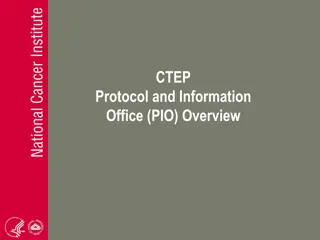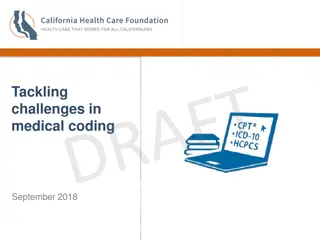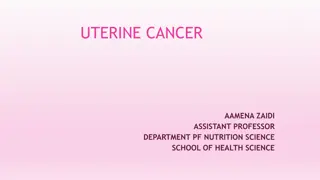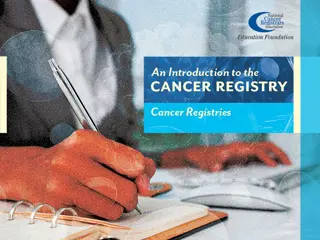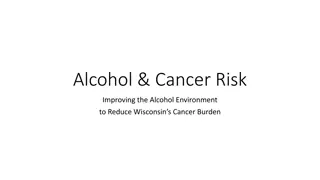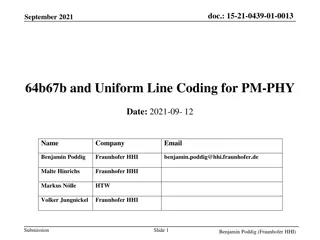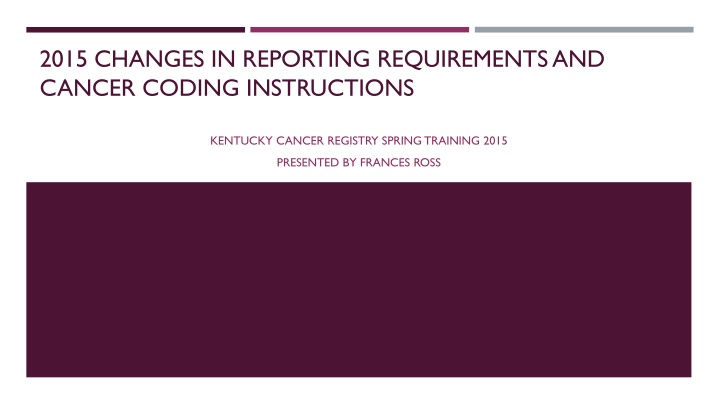
Kentucky Cancer Registry Reporting and Coding Updates 2015
"Explore the changes in reporting requirements and cancer coding instructions presented at the Kentucky Cancer Registry Spring Training in 2015. Learn about updates in coding requirements, reportability criteria, and new data fields introduced for better documentation and tracking. Stay informed for accurate cancer data reporting." (Reads: 482 characters)
Download Presentation

Please find below an Image/Link to download the presentation.
The content on the website is provided AS IS for your information and personal use only. It may not be sold, licensed, or shared on other websites without obtaining consent from the author. If you encounter any issues during the download, it is possible that the publisher has removed the file from their server.
You are allowed to download the files provided on this website for personal or commercial use, subject to the condition that they are used lawfully. All files are the property of their respective owners.
The content on the website is provided AS IS for your information and personal use only. It may not be sold, licensed, or shared on other websites without obtaining consent from the author.
E N D
Presentation Transcript
2015 CHANGES IN REPORTING REQUIREMENTSAND CANCER CODING INSTRUCTIONS KENTUCKY CANCER REGISTRY SPRING TRAINING 2015 PRESENTED BY FRANCES ROSS
CHANGES IN CODING REQUIREMENTS AND REPORTABILITY
CHANGES IN REPORTING REQUIREMENTS Pathologic stage data elements T, N, M and Stage Group are now required to be coded (not merely recommended ), according to AJCC rules. However, blanks are allowed in the cT, cN, cM and pT, pN, pM fields, but not in the cStage Group or pStage Group. Blanks are used when there is no information in the record; or you do not know if an assessment was performed; or the criteria for staging are not met, then T, N, and M are blank. See the Staging Video on Blanks vs. X on the AJCC web site: http://cancerstaging.org/CSE/Registrar/Pages/Presentations.aspx
CHANGES IN REPORTABILITY Carcinoids of the appendix are now reportable as 8240/3 Mature teratomas of the testes in adults are malignant and reportable (9080/3). Mature teratoma is not reportable for pre-pubescent males.
CHANGES IN REPORTABILITY Pancreas Non-invasive mucinous cystic neoplasm (MCN) of the pancreas with high grade dysplasia is reportable. This term replaces mucinous cystadenocarcinoma, non-invasive (8470/2)
CHANGES IN REPORTABILITY Pancreas Cystic pancreatic endocrine neoplasm (CPEN) is reportable. Assign code 8150/3, unless specified as NET grade 1 (8240/3) or NET grade 2 (8249/3) Solid pseudopapillary neoplasm of the pancreas is reportable as 8452/3
NEW DATA FIELDS Directly Coded Summary Stage
NEW DATA FIELDS Treatment Plan this will be a new text box under the Text tab, to allow you to document what treatment was planned if not yet given, or why certain treatments were not planned or given Treatment Follow-back Needed New field to flag abstracts which need to be followed back for additional therapy
CHANGES IN CODING INSTRUCTIONS Sex has two new valid codes Code 5 Transsexual, natal male Code 6 Transsexual, natal female Code 4 remains Transsexual, NOS and may be used if the gender at birth is unknown.
CHANGES IN CODING INSTRUCTIONS Non-definitive Surgery and Surgery at the Primary Site If a needle biopsy precedes an excisional biopsy, even if no tumor is found at the time of the surgery, both the needle biopsy and the surgery must be recorded. Code the needle biopsy in the Non-definitive surgery field and code the excision in the Surgery at Primary Site
CHANGES IN CODING INSTRUCTIONS Radiation therapy Regional Dose: cGy Added instruction: For photon treatment, dosage is reported in cGe units (Cobalt Grey Equivalent) rather than cGy. You must multiply cGe by 100 to get cGy.
CHANGES IN CODING INSTRUCTIONS Other therapy Added instruction to code PUVA (psoralen and long- wave ultraviolet radiation) as Code 1
The Hematopoietic Database and Manual have been updated for 2015; a conversion of data will occur a conversion of data will occur Obsolete histologies may not be used for 2010+ cases Grade will be assigned to converted records, where a defined grade exists Primary site will be assigned to current histologies
OBSOLETE HISTOLOGIES May not be used with diagnoses 2010 and later; an edit check for this will be added. The most common of these are: 9664, 9665, 9667 Hodgkin lymphoma, nodular sclerosis 9663 9684 Malignant lymphoma, large B cell, immunoblastic 9680 9805 Acute biphenotypic leukemia 9809
OBSOLETE HISTOLOGIES A conversion will be performed on any applicable cases in your database with a diagnosis date of 2010 or later. The conversion may result in a schema change for some cases. Detailed information on which cases need manual review will be provided.
GRADE CONVERSION After the obsolete histologies are converted to current histology codes, a grade will be assigned to that case either an applicable grade code, or a 9 will be assigned if there is no defined grade.
PRIMARY SITE CODES WILL BE CONVERTED FOR SELECT CASES For cases 2010 and later, these primary site codes should no longer be used: Blood (C42.0), except for 9761/3 (Waldenstroms Macroglobulinemia) Reticuloendothelial system NOS (C42.3) Hematopoietic system, NOS (C42.4)
PRIMARY SITE CODES WILL BE CONVERTED FOR SELECT CASES Primary site will be reassigned for histologies for which only one primary site code is applicable, e.g., leukemias must be coded (C42.1)
PRIMARY SITE CODES WILL BE CONVERTED FOR SELECT CASES The Primary site will be reassigned to Bone Marrow (C42.1) for histologies which are: leukemias/lymphomas or histologies prominent in the bone marrow which had been coded to C42.0, C42.3, or C42.4
PRIMARY SITE CODES WILL BE CONVERTED FOR SELECT CASES Manual review will be required for the remaining histologies which had been coded to C42.0, C42.3, or C42.4 (these are mostly lymphomas) These may require manual review of CS variables if the newly assigned site results in a CS schema change Fewer than 15 cases will have to be reviewed; a list will be placed on FES for each facility with case(s) to review
CONVERSION INFORMATION Details of the conversion may be found on the SEER web site: http://www.seer.cancer.gov/tools/heme/conversion.html
THE END THANKS!



